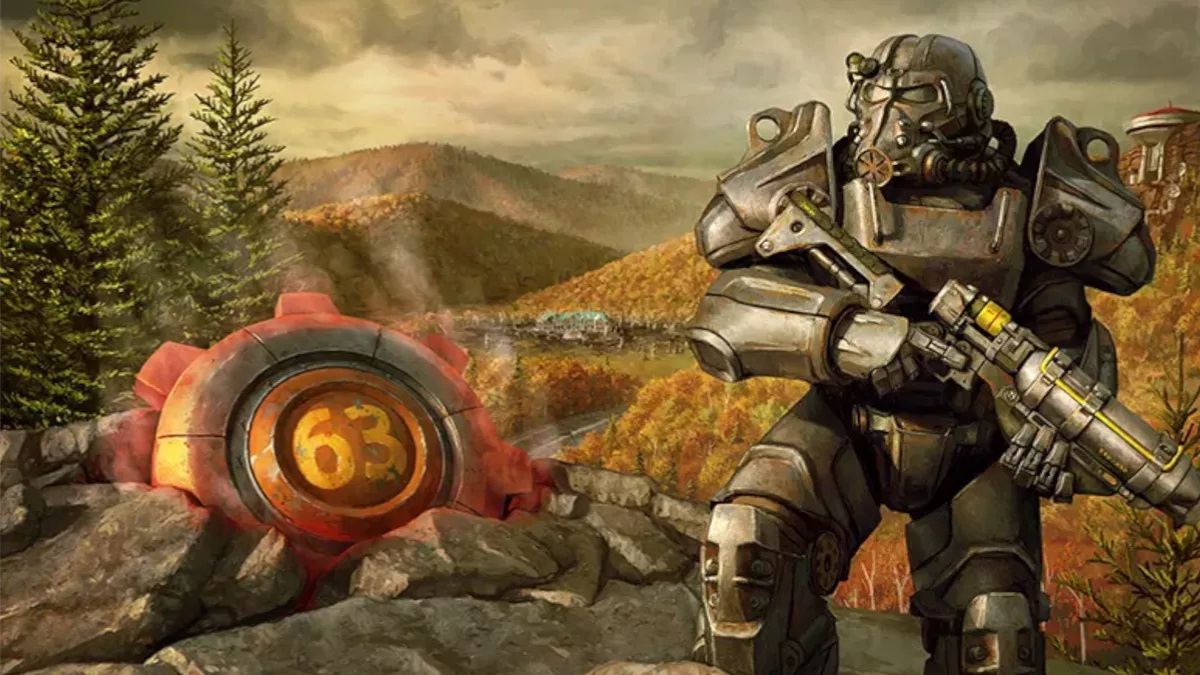SPORTS&GAMES
Character Arcs to Watch in Squid Game Season 2

The global phenomenon known as Squid Game took the world by storm when it debuted on Netflix. Its gripping storyline, intense challenges, and complex characters captivated audiences everywhere. Who could forget the chilling games that pushed participants to their limits? With its mix of survival drama and social commentary, this South Korean series quickly became a cultural touchstone.
As fans eagerly await Squid Game Season 2, the anticipation is palpable. Questions swirl about which beloved characters will return—and how they might evolve in this new chapter. The first season left us with unforgettable character arcs, each filled with trauma, betrayal, and resilience. Now is the perfect time to dive into what we can expect from these characters moving forward!
Recap of character arcs in Season 1
Season 1 of Squid Game introduced us to a diverse cast, each with their own struggles and motivations. Gi-hun, the protagonist, started as a down-on-his-luck gambler. His journey was one of moral questioning and transformation as he faced the brutal realities of survival.
Then there’s Sae-byeok, whose backstory painted her as a fierce survivor. Her desire for freedom drove her decisions throughout the deadly games.
Ali’s arc tugged at our hearts. The loyal worker transformed from trust and optimism into harsh disillusionment within this ruthless environment.
We can’t forget about Sang-woo. His evolution from childhood friend to cunning strategist highlighted how desperation can lead to betrayal.
Each character faced profound dilemmas that challenged their ethics—setting the stage for greater complexities in Season 2.
Potential characters for Season 2
As anticipation builds for Squid Game Season 2, fans are eager to see which characters will return and how they might evolve. The enigmatic frontman remains a top contender. His backstory could unfold further, shedding light on his motivations and connections.
Then there’s Gi-hun, the reluctant hero of Season 1. Will he embrace the darkness or seek redemption? His choices may shape not just his fate but those around him.
We can’t forget about player 067, aka Sae-byeok. If she returns, her journey could explore themes of survival and sacrifice in even grimmer scenarios.
The show also opened doors for new faces. Fresh contestants with unique backgrounds would add layers to the narrative while keeping viewers guessing each step of the way.
With such rich character possibilities ahead, there’s no shortage of excitement surrounding who will emerge in this deadly game once more.
Predictions for their character arcs
As we look ahead to Squid Game Season 2, the potential character arcs spark curiosity and excitement. Gi-hun, having escaped the deadly games, may grapple with survivor’s guilt. Will he seek redemption by exposing the game’s organizers?
On the flip side, characters like Sang-woo could face a dark transformation. With his cunning nature intact, will he become an even more ruthless player? His survival instincts might lead him back into dangerous territory.
Then there’s Sae-byeok’s brother. He’s been left in a precarious position after her demise. Could he emerge as a new protagonist or fall victim to revenge-driven choices?
Moreover, let’s not overlook any possible return of deceased characters through flashbacks or psychological hauntings. These interactions could amplify tension and deepen emotional stakes for everyone involved in this twisted narrative.
How these character arcs could impact the plot
The character arcs in Squid Game Season 2 promise to significantly shape the storyline. As characters evolve, their motivations will create new dynamics within the game.
For instance, a redemption arc for Seong Gi-hun could lead him to challenge the system more boldly. His moral struggle might introduce themes of sacrifice and justice, shaking up the established order.
On the other hand, if we see a darker transformation in characters like Cho Sang-woo, it could heighten tension among players. Betrayals and shifting alliances may drive unexpected plot twists.
Additionally, unresolved backstories from Season 1 can resurface. This will likely deepen emotional stakes as viewers learn what drives these characters beyond survival.
As they grapple with their pasts and present choices, plot developments are bound to keep audiences on edge. The intertwining fates of these evolving personas will build suspense that fans crave.
Fan theories and speculations
Fans of Squid Game have been buzzing with theories about what Season 2 might hold. One popular speculation revolves around the return of Gi-hun, who may take on a new role in the deadly games. Could he become a puppet master rather than a player?
Another intriguing theory suggests that the Front Man’s backstory will be explored further. Fans want to know why he chose this life and how his past influences his actions.
Some are even speculating about potential new contestants from different countries. What if we see variations of traditional childhood games from around the world? This could add layers to both character dynamics and game mechanics.
Additionally, there’s chatter about alliances forming outside of just survival tactics. The psychological elements at play could shift dramatically as characters grapple with moral dilemmas amid chaos.
These theories keep fans engaged, eagerly anticipating twists that will unfold when Squid Game Season 2 finally arrives.
Conclusion and anticipation for Season 2
As we look towards Squid Game Season 2, the excitement among fans is palpable. The intricate character arcs established in the first season laid a strong foundation for what’s to come. Each player brings their own unique story and struggles that resonate with viewers.
The potential developments for returning characters leave much to ponder. Will Gi-hun embrace his new role as a leader or succumb to darker temptations? How will Sae-byeok’s absence affect those who remain? And what about the enigmatic Front Man—could he be facing challenges from within?
With theories circulating online, predictions abound regarding alliances, betrayals, and moral dilemmas that could redefine relationships. Fans are eager for twists that keep them guessing until the last moment.
The anticipation surrounding Squid Game Season 2 is rooted not just in thrilling games but also in how these evolving character arcs will interweave with an unpredictable plot. As we prepare for another intense journey through survival and human nature, one thing is clear: Season 2 promises more depth and complexity than ever before.
SPORTS&GAMES
Viprow.us.com Review and Guide, Your Ultimate Destination for Sports Streaming

Are you a sports enthusiast looking for a reliable way to stream your favorite games and events online? Look no further than Viprow.us.com, a platform offering easy access to the world of sports with just a few clicks. Whether you’re a die-hard NFL fan, a devoted soccer watcher, or obsessed with Formula 1, Viprow aims to deliver all the action directly to your device.
This guide explores what Viprow.us.com offers, its features, and how it makes sports streaming convenient, plus insights into its pros and cons. Let’s jump in and explore everything you need to know about Viprow.
What is Viprow.us.com?
Viprow is a sports streaming website designed to provide access to a wide variety of sports categories. With an aim to cater to fans of football, baseball, basketball, motorsports, and beyond, Viprow ensures that users can watch live games and get updated content. Conveniently organized by categories such as NFL, NBA, MLB, and F1, Viprow makes sports streaming simple and accessible.
It doesn’t matter if you’re looking to live stream an intense championship match or catch up with team performance stats—Viprow positions itself as your ultimate sports streaming companion.
Why Choose Viprow?
For any serious sports fan, finding a reliable and user-friendly streaming platform is essential. Viprow stands out for these reasons:
- Diverse Sports Categories: From prominent leagues like the NBA and Premier League to specialized motorsports like Moto GP and Formula 1, Viprow covers a range of options that cater to all types of fans.
- Live Updates and Content: Whether it’s a guide to the NBA Finals or a schedule breakdown of the NFL season, the platform keeps users in the loop with fresh and relevant content.
- Free Access: Unlike many subscription-based sports streaming platforms, Viprow allows you to stream events without additional payment barriers.
- Simple Navigation: The clean layout and organized sports categories make it easier to find exactly what you’re looking for—whether it’s a live game or archived sports data.
Key Features of Viprow.us.com
Wondering what makes Viprow a go-to platform for sports streaming? Here’s a deeper look at its key features:
1. Wide Sports Coverage
Viprow covers major global sports categories, including:
- Soccer: FIFA tournaments, Premier League, and UEFA Champions League.
- American Football: Catch live NFL games, playoffs, and everything leading up to the Super Bowl.
- Basketball: NBA games, insights into player stats, and even NCAA basketball action.
- Auto Sports: Get updates and streams for Formula 1 and Moto GP.
- Baseball: Watch MLB matches to keep up with your favorite teams.
Whether you’re a casual viewer or a sports aficionado, Viprow ensures there’s something for everyone.
2. Expert Sports News and Updates
Beyond live streaming, Viprow keeps users informed. With news articles like “10 Most Expensive Football Transfers of Summer 2024” or “2024 NBA Playoff Guide” available right on the homepage, sports fans can catch up with market moves, analyses, and predictions.
3. Live Streaming
At its core, Viprow specializes in live streaming. The website includes links and information to stream matches, allowing users to watch in real-time wherever they are.
4. Categories and Filters
The site’s well-defined structure makes it easy to browse through sports genres and matches. Whether you love F1 races or are following Euro 2024 odds, the options are straightforward to find, making navigation user-friendly.
5. Completely Free Access
While many sports streaming platforms lock features behind a paywall, Viprow surprises by offering its services for free. That said, the site contains ads, which is a minor trade-off for a no-cost viewing experience.
How to Use Viprow.us.com for Sports Streaming
Not sure where to start? Follow these steps for a seamless Viprow experience:
- Visit the Website
Go to the official Viprow site (viprow.us.com) on your device.
- Explore the Categories
Browse through relevant categories like NFL, NBA, Soccer, or Auto Sports to locate the game or update you’re looking for.
- Select a Stream
Click on the match or event you want to watch. You’ll typically be guided to streaming links to begin watching live.
- Use Viewing Tools
Check out additional features such as detailed game analyses, predictions, and player stats for an enriched experience.
- Engage with Content
Use guides like “How to Watch Sports Online” or stay informed about updates in articles to enhance your overall engagement with the platform.
Pros and Cons of Viprow
While Viprow is a promising website for sports fans, there are areas to evaluate before you start:
Pros:
- Broad Sports Coverage
Includes everything from football and basketball to niche sports like Moto GP.
- User-Friendly Interface
Simple navigation and well-organized categories make the site easy to use.
- Free Streaming
Enjoy your favorite games without paying a subscription fee.
- Regular Updates
Stay current with top sports news, analysis, and predictions.
Cons:
- Ad-Powered Model
Expect advertisements throughout your experience on the site.
- Unverified Streaming Links
Links provided for streams may vary in quality or reliability.
- No Mobile App
A mobile app option would have made the service even more accessible.
Is Viprow.us.com Safe to Use?
Like many free streaming platforms, Viprow comes with potential downsides. Users should always:
- Use a trusted antivirus or VPN to protect their devices.
- Be cautious about clicking on suspicious ads or unverified links.
While the content quality is commendable, protecting your online security should remain a top priority when using services like Viprow.
Final Thoughts on Viprow.us.com
Viprow.us.com is a powerful free streaming platform that promises to cater to both hardcore fans and casual viewers alike. Its wide category coverage, intuitive design, and up-to-date content make it a great choice for staying connected with your favorite sports. While it may not deliver the ad-free premium experience, its offerings remain unmatched for a cost-free service.
Whether you’re planning your weekend with the NFL playoffs or want to catch up on transfer news in football, Viprow is the platform to bookmark today.
Stream your next match with Viprow and experience the convenience of sports-on-the-go!
SPORTS&GAMES
Dallas Mavericks vs. Boston Celtics Match Report, A Deep Dive into Player Stats

When the Dallas Mavericks clashed with the Boston Celtics, fans knew they were in for a game that promised drama, high-level athleticism, and unforgettable performances. Both teams brought their A-game, showcasing individual brilliance and collective teamwork. Let’s break down the player stats that defined the night and explore the impact of key players on the game.
A Recap of the Game
The match was a close contest between two of the NBA’s most exciting teams. The Mavericks, led by their superstar Luka Dončić, brought their finesse, while the Celtics, driven by their dynamic duo Jayson Tatum and Jaylen Brown, showcased their grit and firepower. Fans were treated to crunch-time moments, clutch plays, and performances that kept everyone on the edge of their seats Mavericks vs Celtics Player Stats.
Now, let’s dissect how the night’s key performers measured up statistically.
Mavericks Key Players and Stats
Luka Dončić – The Maestro on the Court
Stat Line:
- Points: 37
- Rebounds: 11
- Assists: 8
- Steals: 2
Luka Dončić continues to shine as one of the NBA’s most versatile players. His ability to score efficiently while making plays for his teammates stood out. With 37 points, Dončić was the game’s top scorer, hitting key shots from both beyond the arc and in the paint. Luka also tallied 11 rebounds, demonstrating his knack for being everywhere on the court. His near triple-double performance proved just how vital he is for the Mavericks.
Perhaps the most awe-inspiring aspect wasn’t just his scoring—although his clutch three-pointer near the end of the fourth quarter was a highlight. It was his court vision. Luka repeatedly found open teammates with impossible passes, turning defensive collapses into opportunities.
Christian Wood – The Inside Force
Stat Line:
- Points: 22
- Rebounds: 9
- Blocks: 2
Christian Wood brought consistent scoring in the paint and stretched the floor with his three-point shooting. His rim protection also added a much-needed defensive boost for the Mavericks. With almost Mavericks vs Celtics Player Stats double-double performance, Wood showcased his versatility as both a scorer and a rebounder.
Wood’s physicality was key against the Celtics’ big men, helping Dallas hold their own under the rim.
Tim Hardaway Jr. – A Three-Point Threat
Stat Line:
- Points: 15
- 3-Point FG: 3/7
Tim Hardaway Jr. provided the Mavericks with crucial floor spacing. Though not his most efficient night from the 3-point line, his timely three-pointers gave Dallas valuable momentum during critical stretches.
His contributions extended beyond scoring, with solid defensive plays that disrupted Boston’s rhythm.
Others Worth Mentioning
- Spencer Dinwiddie had a quiet 12 points but played a key role in facilitating the offense when Luka was on the bench.
- Dwight Powell tallied 7 rebounds and added energy on the defensive end.
Boston Celtics Key Players and Stats
Jayson Tatum – The MVP Candidate
Stat Line:
- Points: 35
- Rebounds: 13
- Assists: 5
- Blocks: 1
Jayson Tatum was nothing short of spectacular, lighting up the scoreboard with 35 points. Tatum’s combination of skill and basketball IQ was on full display as he continuously broke down Dallas’ defense. He was particularly effective in isolation plays and efficient from mid-range and the free-throw line.
Much of Boston’s momentum stemmed from Tatum’s ability to score in bunches during tight stretches of the game. His 13 rebounds further emphasized his versatility, showcasing his ability to dominate both the offensive and defensive boards.
Jaylen Brown – The Secondary Star
Stat Line:
- Points: 28
- Rebounds: 7
- Assists: 3
- Steals: 2
If Jayson Tatum was the engine, then Jaylen Brown was the turbocharger. With 28 points, Brown displayed his well-rounded scoring ability, consistently finishing drives and knocking down perimeter shots. His defensive hustle was evident with two key steals that stopped Dallas’ momentum.
Brown’s physical approach to the game brought much-needed intensity, particularly in attacking the Mavericks’ interior defense.
Marcus Smart – The Playmaker and Defensive Anchor
Stat Line:
- Points: 14
- Assists: 10
- Steals: 3
Marcus Smart embraced his role as the Celtics’ floor general. His 10 assists highlighted his court vision and selflessness, as he consistently fed his teammates for open shots. On the other end, Smart’s defensive prowess was a nightmare for Dallas’ guards.
His ability to disrupt Luka Dončić’s rhythm on a few late possessions underscored why Smart remains such a critical piece of Boston’s defense-first identity.
Al Horford – Ageless and Reliable
Stat Line:
- Points: 12
- Rebounds: 8
- Blocks: 2
Al Horford once again proved why he’s invaluable to the Celtics. From making timely jumpers to defending the post Mavericks vs Celtics Player Stats, Horford played an understated yet vital role throughout the game. His defensive IQ disrupted many of Luka Dončić’s drives.
Others Worth Mentioning
- Malcolm Brogdon provided instant offense off the bench, with 17 points on an efficient shooting night.
- Robert Williams III contributed 6 points but made up for it with his defensive rim protection and shot-altering presence.
Key Match-Up Comparisons
Luka Dončić vs Jayson Tatum
Both players put up MVP-worthy numbers, but their styles were vastly different. Luka’s brilliant playmaking kept Dallas competitive, while Tatum’s scoring runs shifted momentum frequently in Boston’s favor. Both are foundational stars who make their respective teams contenders on any given night.
- Points: Dončić (37) | Tatum (35)
- Rebounds: Dončić (11) | Tatum (13)
- Assists: Dončić (8) | Tatum (5)
Although Dončić slightly edged out Tatum statistically, the game’s final score leaned heavily on Tatum’s ability to close out plays effectively.
Supporting Bench
Boston’s bench outperformed Dallas’ significantly in this matchup. Malcolm Brogdon led the charge with impactful scoring, while Robert Williams provided a defensive edge. Dallas struggled to keep up in bench production, highlighting the depth Boston brings into these high-stakes games.
Game Analysis
From start to finish, the Dallas Mavericks and Boston Celtics delivered an elite-level basketball contest. The Mavericks leaned heavily on Luka Dončić, whose brilliance was evident, but their reliance exposed gaps in their depth. On the other hand, Boston showcased a well-rounded team effort, with Jayson Tatum and Jaylen Brown leading the charge, supported by a consistent bench performance.
While Dallas showcased moments of genius, including Christian Wood’s dominance in the paint and Luka’s late-game clutch shots, they ultimately fell short against Boston’s defensive discipline and superior depth.
Final Score: Boston Celtics 123, Dallas Mavericks 115
Closing Thoughts on the Mavericks vs. Celtics Showdown
What made this matchup special was the clash of basketball philosophies. The Mavericks’ brilliance came primarily from individual stardom, while the Celtics showcased the value of having a balanced and cohesive roster.
For fans, this game was yet another reminder of why these two teams are considered contenders in their respective conferences. With Luka Dončić, Jayson Tatum, and Jaylen Brown headlining, we’re likely to see many more thrillers between these two teams in the future.
If you’re a basketball fanatic looking for in-depth player stats and game insights, keep following our blog. Who do you think had the most impactful performance in this game? Share your thoughts in the comments below.
SPORTS&GAMES
Is Fallout 76 Crossplay Finally Here? Everything You Need to Know!

The wasteland of Fallout 76 has captivated gamers since its launch, but one question continues to linger in the minds of players: is fallout 76 crossplay finally here? The idea of joining friends across different platforms sounds like a dream come true. Imagine teaming up with pals on Xbox while your buddy logs in from a PlayStation or PC. It’s a revolutionary concept that could reshape how we experience this expansive game.
As gaming evolves, so does our desire for seamless connections and shared adventures. With developers pushing boundaries, the potential for crossplay is more tantalizing than ever before. In this blog post, we’ll explore what crossplay means for Fallout 76 specifically and dive into its history, benefits, and set-up process. We’ll also address any challenges it may bring along and glance at other games successfully integrating crossplay features.
So grab your Pip-Boy—let’s delve deep into everything you need to know about Fallout 76’s journey toward becoming truly connected!
What is Crossplay?
Crossplay is the ability for players on different gaming platforms to play together in the same game environment. This means that whether you’re on a PlayStation, Xbox, or PC, you can team up with friends regardless of their chosen system.
The concept challenges traditional boundaries in gaming. Players are no longer confined to their console’s ecosystem. Instead, they can unite and explore virtual worlds side by side.
This feature promotes inclusivity within gaming communities. It allows friends who own different devices to connect and share experiences without limitations.
Crossplay also enhances matchmaking capabilities. Games often see increased player pools, leading to more dynamic interactions and quicker matches.
Crossplay aims to create a unified experience where gamers can enjoy shared adventures without barriers standing in the way. As this trend grows, it reshapes how we think about multiplayer gameplay across all genres.
The History of Crossplay in Fallout 76
The journey of crossplay in Fallout 76 has been a rollercoaster. When the game launched in late 2018, players quickly voiced their desire for cross-platform capabilities. The absence of this feature was glaring, especially as other games embraced it.
Bethesda listened but faced significant technical hurdles. Implementing crossplay isn’t just about connecting different platforms; it involves balancing gameplay and maintaining fairness across hardware capabilities.
Over the years, community discussions grew louder. Players yearned to team up with friends on different consoles or PCs without barriers. Despite Bethesda’s efforts to improve the overall gaming experience, progress on true crossplay remained slow.
As updates rolled out, hopes flickered like a dying campfire. The prospect of uniting the player base became not only a topic of conversation but also a beacon for future possibilities within Fallout 76’s evolving landscape.
The Benefits of Crossplay for Players
Crossplay opens up a world of possibilities for gamers. Imagine teaming up with friends, no matter what platform they prefer. This feature breaks down barriers and allows for a more inclusive gaming community.
Another major benefit is the expanded player base. With crossplay, matchmaking becomes quicker and more efficient. You can dive into games without long wait times, keeping the action flowing.
Additionally, it encourages skill development. Players face diverse play styles from various platforms, pushing everyone to adapt and improve their strategies.
Crossplay fosters lasting friendships. Collaborating with players across different systems enhances social interaction within the game. It’s all about building connections that transcend hardware limitations—making every session feel even more engaging!
How to Set Up Crossplay in Fallout 76
Setting up crossplay in Fallout 76 is a straightforward process, allowing you to enjoy the wasteland with friends on different platforms. First, ensure your game is updated to the latest version. This step is crucial for accessing all features.
Next, create or log into your Bethesda.net account. Crossplay functionality relies heavily on this account integration. Once logged in, head over to the game’s settings menu.
Look for the “Social” tab and enable crossplay options there. You might need to adjust privacy settings depending on who you want to connect with and how open you want your gameplay experience to be.
After enabling it, invite friends using their Bethesda usernames regardless of what platform they are playing on. Dive into the world together and explore what makes Fallout 76 so captivating!
Potential Challenges and Concerns with Crossplay
While crossplay offers exciting opportunities, it also brings challenges. One major concern is the balance between different platforms. Players on PC may have advantages due to superior graphics and faster load times compared to console users.
Another issue revolves around community dynamics. Crossplay can lead to mixed interactions, where players from various backgrounds might not mesh well in terms of gameplay styles or etiquette.
There’s also the risk of cheating and hacking. PC players are often more vulnerable to such threats, potentially disrupting the experience for everyone involved.
Additionally, server stability can become a challenge as increased player counts put pressure on infrastructure. This could lead to lag or connectivity issues that frustrate gamers across all platforms.
There’s a fear among some players about losing their unique gaming identities when merging communities with differing cultures and preferences.
Other Games That Have Successfully Implemented Crossplay
Crossplay has gained traction in the gaming world, with several titles leading the charge. One of the most notable is “Fortnite,” where players from different platforms can join forces or compete against each other seamlessly. This feature has been instrumental in building a massive and diverse player community.
Another example is “Rocket League.” Players can enjoy high-octane soccer matches regardless of whether they’re on PC, PlayStation, Xbox, or Nintendo Switch. The crossplay functionality enhances matchmaking speed and overall enjoyment.
“Call of Duty: Warzone” also embraces this trend by allowing friends to team up across various consoles and PCs. It’s an essential move that keeps gameplay fresh while expanding social connectivity among gamers.
These successful implementations highlight how crossplay not only enriches individual experiences but fosters vibrant gaming communities across different platforms.
The Future of Crossplay in Gaming
The future of crossplay in gaming looks promising. As technology advances and platforms become more interconnected, players can expect seamless interactions across different consoles and PCs.
Game developers are increasingly recognizing the demand for crossplay. They understand that it enhances player experience and expands their audience reach. With titles continually breaking down barriers, we might see even more franchises embracing this feature.
Moreover, community feedback plays a crucial role. Players want to connect with friends regardless of their chosen platform. This growing desire will likely push companies to prioritize crossplay in future projects.
As industry standards evolve, so too will the expectations of gamers. Crossplay is becoming an essential component rather than just an added bonus in multiplayer experiences. The landscape is shifting rapidly, paving the way for a truly unified gaming environment where everyone can play together without limitations.
Conclusion
Crossplay has become a hot topic in the gaming community, and Fallout 76 is no exception. Players have eagerly anticipated this feature, hoping for a more interconnected experience. The introduction of crossplay could reshape how gamers engage with each other, breaking down barriers between platforms.
As the gaming industry continues to evolve, it seems likely that more developers will embrace crossplay functionality. This shift could lead to an even richer multiplayer environment in games like Fallout 76. Whether you’re exploring the wasteland alone or teaming up with friends from different consoles, crossplay may just be what players need for a truly immersive experience in their favorite games.
-

 TECHNOLOGY10 months ago
TECHNOLOGY10 months agoTronics 0RUL1108 Bluetooth: The Future of Wireless Technology
-

 TECHNOLOGY10 months ago
TECHNOLOGY10 months agoBE78N-S7J-E Unveiled: A Deep Dive into Its Features and Benefits
-

 TECHNOLOGY10 months ago
TECHNOLOGY10 months agoTop 10 Must-See Posts from v3rb1son.tumblr You Can’t Miss!
-

 TECHNOLOGY11 months ago
TECHNOLOGY11 months agoThe Benefits of a High-Speed Broadband Internet Connection for Home and Business
-

 TOPIC11 months ago
TOPIC11 months agoThe Story Behind 1-617-693-7201: A Comprehensive Analysis
-

 TOPIC10 months ago
TOPIC10 months agoEU-NENCFZS8 Explained: What You Need to Know for 2024
-

 TECHNOLOGY11 months ago
TECHNOLOGY11 months agoHow Harwalk Info Labs is Revolutionizing the Tech Industry
-

 TECHNOLOGY11 months ago
TECHNOLOGY11 months agoThe Future of Gaming Unveiled at DashGameFest 2023
